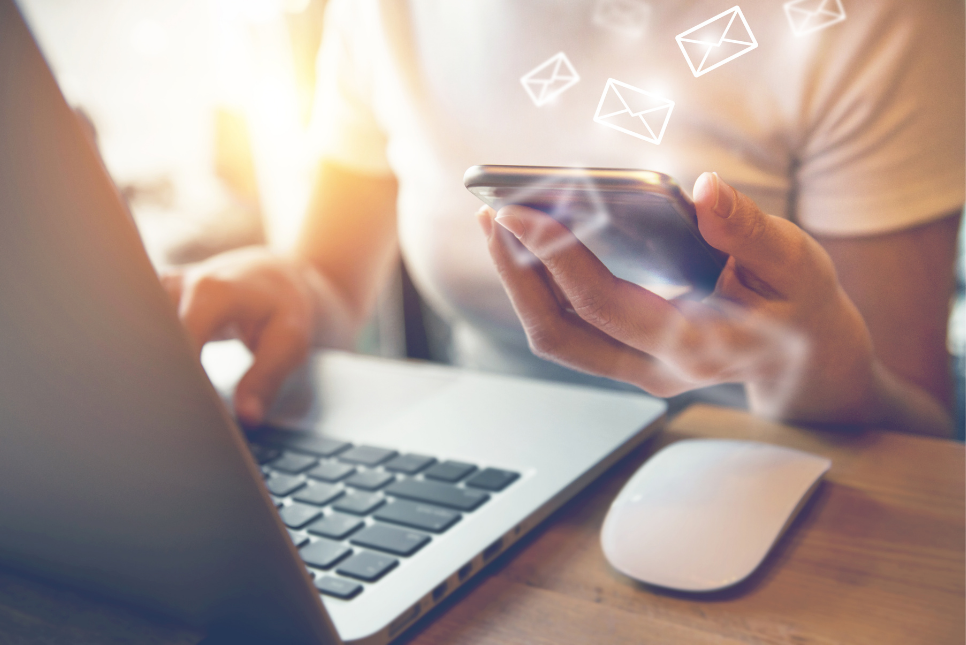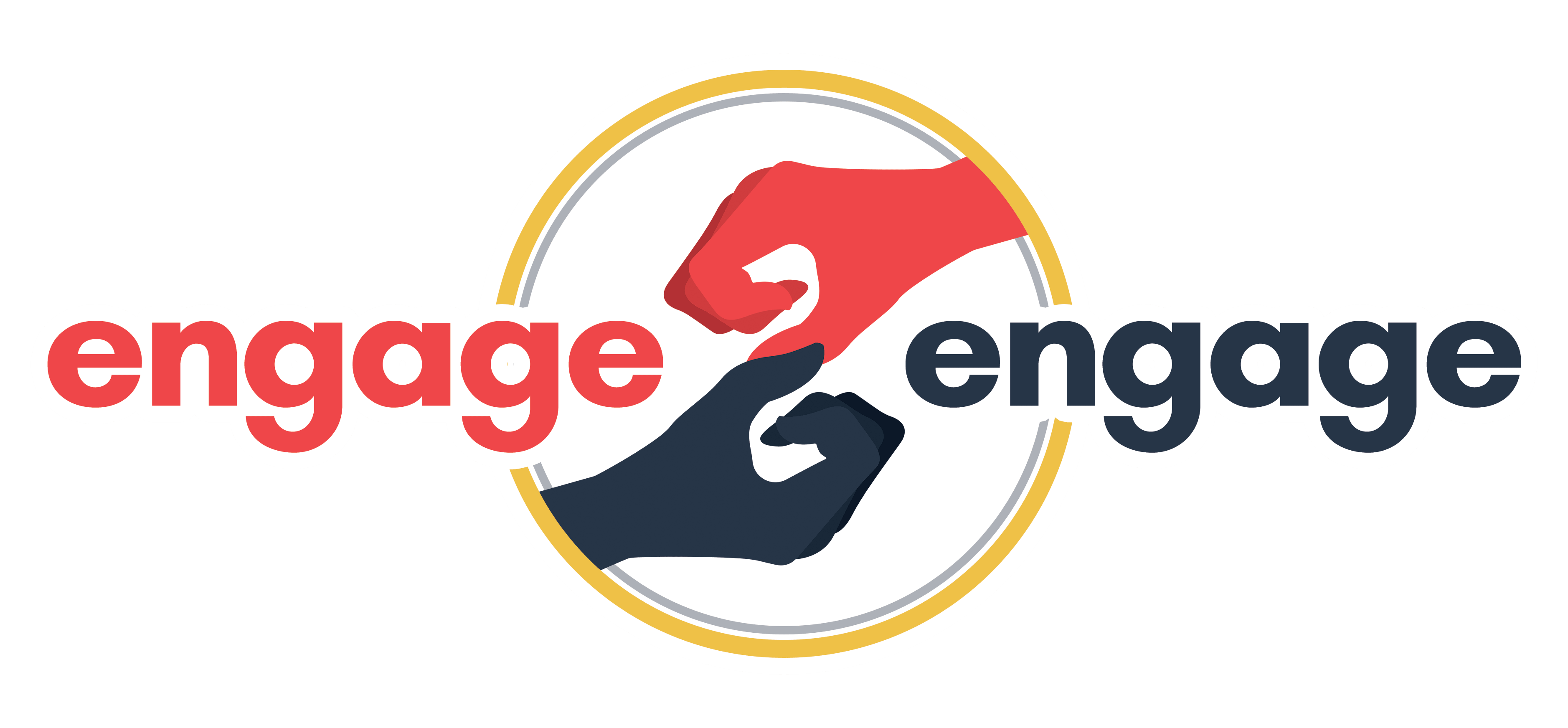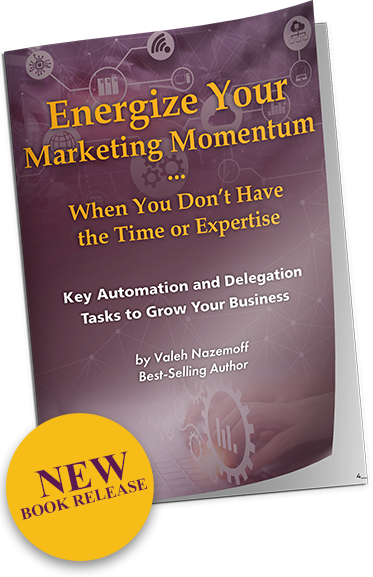Different Types of Email Campaigns [+ Infographic]
We all have a habit of checking our email often, even if we know that nothing is likely to be there. In fact, roughly 34% of Americans admit to peeking several times per day.
This is an opportunity to grab your prospect’s attention – when they are refreshing their emails several times a day. Still, you need to approach this strategically.
When it comes to email marketing, the first thing you should do is consider the purpose of your campaign. You often want to have a definitive call to action, a button or prompt in your email that will drive people to take an action.
What do you want this email to do? What behavior or action do you want triggered? If your email is about an upcoming sale, it will be wildly different from an email about a new service you are offering, for instance.
Who is this email for? An email to a new customer will be different from one sent to someone who has already been signed up for some time. In that case, you will want to think about what you can do to engage their attention.
Where will the email take your customers? You might want to direct them to the home page, to view all your products, or you could be directing them to specific collections, or to register for an event.
Whatever the answer may be to these questions, the best way to address them is to consider what type of email campaign you will be utilizing. As a medium, email, like its physical counterpart, is adaptable and resilient. You can craft campaigns however you like, so long as they remain within the boundaries of the message box.
Basic Emails: Welcomes and Fulfillments
When a customer signs up on your website, the first thing you want to do is send them a welcome email! These emails are simply to thank the customer for signing up to receive your newsletters and information. You might even consider including a lead magnet for people who sign up.
Afterwards, you will want to be able to send your customers a fulfillment email as a thank you for signing up. While the main purpose of these messages is to let your customer know that their item is on the way or in the attached PDF document, they can also be used as promotional space for your offering.
For example, if you have recently launched a new line of products, you could include a link to see the collection at the bottom or top of the thank you email.


Onboarding Email Series
So, someone decides to take the plunge and sign up for that week-long course, virtual event, or a service you have been promoting across several social media platforms this week. Congratulations! Of course, if you want to ensure that they get the most out of the course, you will want to onboard them thoroughly. That is where the onboarding email series comes into play.
In the case of an extensive week-long course, you will want to send them several onboarding emails that walk them through what to expect and how to make the most of the material. The schedule of emails might look something like this:
● Welcome/Account Information: This one is self-explanatory. You welcome them to the course, event, or service offering and thank them for signing up. Tell them how excited you are to have them, what will be covered, and about the valuable materials and guides they will receive. You will also likely want to provide them with the information they will need to access the portal, monitor their progress, and so on.
● Walk-Through: While you do not want to give all the contents away through a single email, the next email, you could tell those registered what they can expect. You might provide a step-by-step walkthrough that outlines the nature of the course, event, or service, so they can plan accordingly.
● Reminder/Progress Check-In: In this third email, you want to make sure they see the offering to the end! To do that, you might include an email that reminds them to log in to the portal or encourage them to check their progress along the way. These emails should be motivating rather than pushy. For example, you might mention that you see how much progress they have made and are excited to see them reach their goal.
Newsletter Emails and Broadcast Messages
Newsletter emails, also sometimes referred to as broadcast messages, are sent out to keep your leads up to date on the latest and greatest happenings. These are usually sent out on a consistent schedule for newsletters and a series of announcements for a broadcast message.
While you may opt for text-only versions, many modern newsletter emails are as unique as their physical counterparts. Some might include photos, and others even opt to use videos! Be conscious of how creative you get as your emails might get stuck in spam or considered promotional and fall in the junk box.
Some uses of newsletter emails or broadcast messages include:
● Updating customers on your company’s blog posts;
● Offering unique deals and codes;
● Informing customers of upcoming events;
● Updating customers on changes to any policies;
● And highlighting anything of note within your company.
● Updating customers on your company’s blog posts;
● Offering unique deals and codes;
● Informing customers of upcoming events;
● Updating customers on changes to any policies;
● And highlighting anything of note within your company.
Call to Action (CTA)
Emails that prompt the customer to do something are extremely varied. These sorts of updates should be tailored to their goal. You want to have, as the name implies, a call to action—a button or link for your customer to click through.
Perhaps the most ubiquitous kind of this variety of email campaign is the sales announcement email. Companies will often attach a unique link to a service that they are offering, which entices people to go read about the service, what it entails, and how they can benefit from it. Some business owners might even offer a code that can be redeemed for a discount off one month of service. For example, a graphic design agency might offer up the code FLYER20 if they are introducing a new flyer design package and want to give people the chance to try it for 20% off the original price.
You do not always have to ask for customers to buy something, though. Your prompt might be for something as simple as checking out a new line of products or services.
You could also send out a survey or review email, where you ask your customer to provide feedback. Exactly what you want them to tell you about is, again, up to you. It can be anything from asking them about how the website runs to leaving a review on a product they just purchased. Something of value to them and to you.
It should be noted that these emails can often be combined with others. Your newsletter email, for instance, might be combined with your sales for the week or month. The transactional receipt or email fulfillment could include a link for leaving a review.
A few ideas for “call to action” style emails are:
● A special exclusive offer (for example, a personal trainer might offer a bonus 1-hour session for those who sign up for a week-long program)
● Announcements of open positions within your company
● Requests for a product review. You might even offer some type of incentive for people who choose to give one.
● Notifications that customers have items in their cart.
● Invitations to exclusive events
● A special exclusive offer (for example, a personal trainer might offer a bonus 1-hour session for those who sign up for a week-long program)
● Announcements of open positions within your company
● Requests for a product review. You might even offer some type of incentive for people who choose to give one.
● Notifications that customers have items in their cart.
● Invitations to exclusive events
Once someone does perform your desired action, you should make sure to remove them from the email list and tagging. That does not mean that you will lose communication with them. It simply means that your focus will look a little different now that you have won them over.
Promotional Campaigns
Generally, promotional campaigns are designed to bring in customers or push them to your goal of a purchase. Ideally, promotional campaigns will entail 5-7 emails. Every word of these emails should count, compelling prospects closer to the goal: taking the leap to being customers or upselling existing customers.
One of the most popular types of promotional campaigns is the cart abandonment campaign, wherein emails are automatically sent to remind customers of items that have been left in their cart. This strategy is often employed by major online retailers like Amazon.
Of course, cart abandonment emails will not make much sense if you are not selling a physical product. What you can do is remind prospects of what they can get out of your services after they sign up for your newsletter or read a couple of your blog posts. Highlight an upcoming event and get them excited to participate.
What Should You Do Next?
Keep in mind that these examples are just a few of the most common campaign types. You can be as creative as you want, and you do not necessarily have to stay strictly within these categories.
Also keep in mind that creating compelling email nurtures are only the first part of the journey. You must be ready to engage leads through every step of the process.
If you want a trusty guide to help you through this journey, you can sign up for our Exclusive Blog Insights, where we send tips right to your own inbox!






